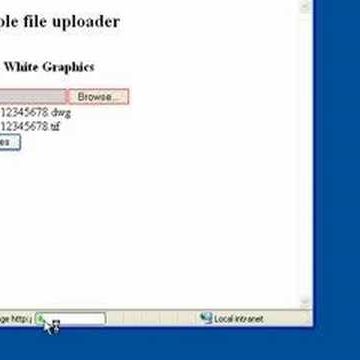Martin Richard Rose
age ~73
from Sugar Land, TX
- Also known as:
-
- Martin R Rose
- Martin Debra Rose
- Martin Rose Taylor
- Richard Rose Martin
- Rose Martin
- Rosa Martin
Martin Rose Phones & Addresses
- Sugar Land, TX
- Louisville, CO
- Corona de Tucson, AZ
- Reno, NV
- Boulder, CO
- Louisville, CO
- Tucson, AZ
Education
-
School / High School:Guilford College of Law
Ranks
-
Licence:New York - Currently registered
-
Date:2009
Lawyers & Attorneys

Martin Rose - Lawyer
view sourceLicenses:
New York - Currently registered 2009
Education:
Guilford College of Law

Martin Rose - Lawyer
view sourceISLN:
920243518
Isbn (Books And Publications)

Histoire Et Hermeneutique: Melanges Pour Gottfried Hammann
view sourceAuthor
Martin Rose
ISBN #
2830910680

Rien De Nouveau: Nouvelles Approaches Du Livre De Quoheleth
view sourceAuthor
Martin Rose
ISBN #
3727812559

Der Ausschliesslichkeitsanspruch Jahwes: Deuteronomische Schultheologie Und Die Volksfrommigkeit in Der Spaten Konigszeit
view sourceAuthor
Martin Rose
ISBN #
3170024906

Deuteronomist Und Jahwist: Untersuchungen Zu Den Beruhrungspunkten Beider Literaturwerke
view sourceAuthor
Martin Rose
ISBN #
3290120678

The Past Climate of Arroyo Hondo, New Mexico, Reconstructed from Tree Rings
view sourceAuthor
Martin R. Rose
ISBN #
0933452055
Name / Title
Company / Classification
Phones & Addresses
Pampered Pup Sandwich Shop
Us Patents
-
Salting Text In Database Tables, Text Files, And Data Feeds
view source -
US Patent:20210326414, Oct 21, 2021
-
Filed:Apr 21, 2021
-
Appl. No.:17/236104
-
Inventors:- San Francisco CA, US
Tsz Ling Christina Leung - Foster City CA, US
Michael Anderson - Conway AR, US
Matt LeBaron - Salinas CA, US
Martin Rose - Superior CO, US -
International Classification:G06F 21/16
G06F 7/10
G06F 16/00
G06F 21/60
G06F 21/62 -
Abstract:A system for “horizontal” salting of database tables, text files, and data feeds utilizes a key field and character position within that field (the “Key Character”) and a Salting Field, which contains content that can legitimately be in one of at least two states without impacting the usefulness of the data. A unique identifier, which is assigned to the recipient of the data, is hidden within the data by using the variations of the states in the Salting Field, with the value of the Key Character identifying the position within the unique identifier. This type of salting is invisible to the recipient of the data file, does not alter the accuracy of the data, and can be made unique for a particular party receiving data files or unique for each data file.
-
Salting Text And Fingerprinting In Database Tables, Text Files, And Data Feeds
view source -
US Patent:20210026598, Jan 28, 2021
-
Filed:Feb 16, 2017
-
Appl. No.:15/999100
-
Inventors:- Conway AR, US
Tsz Ling Christina Leung - Foster City CA, US
Matt LeBaron - Salinas CA, US
Martin Rose - Superior CO, US
Ray Kraus - Rochester NY, US
Arthur Coleman - Carmel Valley CA, US
Michael Anderson - Conway AR, US -
International Classification:G06F 7/08
G06F 16/11
G06F 21/60 -
Abstract:A system and method for salting and fingerprinting database tables, text files, data feeds, and the like, first resorts the data according to a field or fields in the data set. A salting recipe is selected and applied to the sorted data. A fingerprint of the data is captured after sorting and salting. The data is then restored to its original order before being sent to a trusted third party. Because the data owner retains information concerning the sorting sorting sonar technique, salting technique, and the fingerprint, the data owner can reconstruct the unsalted file from the salted file, and can determine if a wild file contains data from the data file. The salting is difficult to detect by the bad actor, even if the bad actor is aware that the data has been salted.
-
System And Method For Identifying Leaked Data And Assigning Guilt To A Suspected Leaker
view source -
US Patent:20200092595, Mar 19, 2020
-
Filed:Mar 9, 2018
-
Appl. No.:16/494022
-
Inventors:- San Francisco CA, US
Chivon Powers - Burlingame CA, US
TSz Ling Christina Leung - Foster City CA, US
Martin Rose - Superior CO, US
Matt LeBaron - San Juan Bautista CA, US -
International Classification:H04N 21/258
H04N 21/234
H04N 21/8358
G06F 21/16 -
Abstract:A system and method for identifying a leaked data file and assigning guilt to one or more suspected leakers proceeds through a plurality of levels. At a first level, primary watermark detection occurs. Data is inserted into a subset of data to determine correlation with data in the suspected leaked file. The guilt probability that results is then weighted based on the number of bits matched. In a second level, another search process is performed for detecting additional salt-related patterns. The guilt score is then computed for every detected recipient identifier for the suspected leaked data file, and the relative guilt of these recipients is weighted. In a third layer, the statistical distribution of data in the suspected leaked file is compared with that of corresponding data in the reference files. After this layer is complete, the average of guilt scores across each of the layers is calculated.
-
Data Watermarking And Fingerprinting System And Method
view source -
US Patent:20190095595, Mar 28, 2019
-
Filed:Mar 18, 2017
-
Appl. No.:16/086577
-
Inventors:- Little Rock AR, US
Martin Rose - Superior CO, US
Christina Tsz Ling Leung - Foster City CA, US
Michael Anderson - Conway AR, US -
International Classification:G06F 21/16
G06N 20/00 -
Abstract:A system for applying fingerprinting/watermarking of consumer data, and analyzing “wild files” of consumer data to assign a guilt score for a particular party who may have leaked the data, allows the owner of data sources (“Data Owners”) to identify and assert ownership of textual data that has been distributed outside of their firewall in the clear (i.e., without encryption), either intentionally or unintentionally, and assign guilt to parties misusing the data. The system can be used by Data Owners who transmit, lease, or sell data to individuals or organizations (“Trusted Third Parties” or “TTPs”) to recognize and assert ownership of their data in the case where one or more TTPs leaks the data (the leaked file is defined as a “Leaked Subset”) into the hands of others (“Bad Actors”) who either knowingly or unknowingly use the data illegally.
-
Salting Text In Database Tables, Text Files, And Data Feeds
view source -
US Patent:20190034601, Jan 31, 2019
-
Filed:Dec 22, 2016
-
Appl. No.:16/067457
-
Inventors:Arthur COLEMAN - Carmel Valley CA, US
Tsz Ling Christina LEUNG - Foster City CA, US
Michael ANDERSON - Conway AZ, US
Matt LEBARON - Salinas CA, US
Martin ROSE - Superior CO, US
- Conway AR, US -
International Classification:G06F 21/16
G06F 21/62
G06F 21/60 -
Abstract:A system for “horizontal” salting of database tables, text files, and data feeds utilizes a key field and character position within that field (the “Key Character”) and a Salting Field, which contains content that can legitimately be in one of at least two states without impacting the usefulness of the data. A unique identifier, which is assigned to the recipient of the data, is hidden within the data by using the variations of the states in the Salting Field to represent a binary 0 or 1, with the value of the Key Character identifying the bit position of the binary 0 or 1 within the unique identifier. This type of salting is invisible to the recipient of the data file, does not alter the accuracy of the data, and can be made unique for a particular party receiving data files or unique for each data file.
-
Interactive Marketing Simulation System And Method
view source -
US Patent:20150227878, Aug 13, 2015
-
Filed:Feb 9, 2015
-
Appl. No.:14/617584
-
Inventors:- Little Rock AR, US
Brently Barrow - Little Rock AR, US
Eric Joshua Stuart - Conway AR, US
Martin Richard Rose - Superior CO, US
Terry Talley - Conway AR, US -
International Classification:G06Q 10/06
G06N 5/04
G06Q 30/02
G06F 17/50 -
Abstract:An interactive web-based marketing simulation game relying on a proprietary body of knowledge (BoK), techniques and methods allows marketing business leaders to simulate the likely outcomes arising from strategic choices made by the user or by management. A tool enabling modification to create evidence-based, objectively validated modified user data to increase the confidence in the predictability of the outcomes arising from strategic choices enables anonymous conversations between users through comments, questions and feedback. The result is a management planning and decision support tool capable of suggesting to the user that the user activate certain specific initiatives in a specific order to achieve desired outcomes within a desired timeframe.
License Records
Martin Rose
License #:
P010853 - Active
Category:
Social Work
Issued Date:
Jul 26, 2016
Expiration Date:
Aug 31, 2018
Type:
Clinical Social Worker Associate
Resumes

Martin Rose
view source
Account Manager
view sourceWork:
Account Manager

Martin Keith Rose
view source
Martin Or Rose
view source
Martin Rose
view sourceLocation:
United States

Martin Rose
view sourceLocation:
United States
Medicine Doctors

Martin Christopher Rose
view sourceSpecialties:
Internal Medicine
Endocrinology, Diabetes & Metabolism
Endocrinology, Diabetes & Metabolism
Education:
University of California at San Francisco (1971)
Plaxo

rose martin
view sourceConsultant at Partylite

Rose Martin
view sourcePhilips

Rose Martin
view sourceAshby, Mn
Classmates

Martin Martin Rose (Rose)
view sourceSchools:
Ellisville High School Ellisville MS 1961-1965
Community:
Roy Rogers, Delia Mclaughlin, Bonnie Butler, Tommie Hopkins, Larry Beech

Martin Rose
view sourceSchools:
Marquette High School Marquette MI 1976-1980
Community:
Linda Hirvonen, Jerald Messerschmidt

Martin Rose
view sourceSchools:
International School Munich SC 1968-1975
Community:
Gerald Abernathy, Judith Croom, Beverly Erwin

Martin de Rose
view sourceSchools:
Irvington High School Irvington NY 1978-1982
Community:
Gloria Bruni

Berkovitz-Martin Rose | H...
view source
Martin Rose, Mamaroneck H...
view source
Martin G. Rose
view source
Lynn Martin Rose
view source
Martin Rose Sulit Cabuyadao
view source
Martin Rose
view source
Martin Rose
view source
Charlotte Martin Rose
view source
Loree Martin Rose
view source
Martin Rose
view sourceGoogleplus

Martin Rose
Work:
Rose Inter Secre Service - Director (2011)

Martin Rose
Education:
Durham University - Physics, with Philosophy

Martin Rose
Work:
Poke London - Creative (2009)

Martin Rose
Relationship:
Single
About:
I am an internet blogger Tech Guru and i love helping people with there tech problems i also enjoy coding computer software and Play Table tennis

Martin Rose

Martin Rose

Martin Rose

Martin Rose
Youtube
Myspace

Martin Rose
view sourceFlickr
Get Report for Martin Richard Rose from Sugar Land, TX, age ~73
















